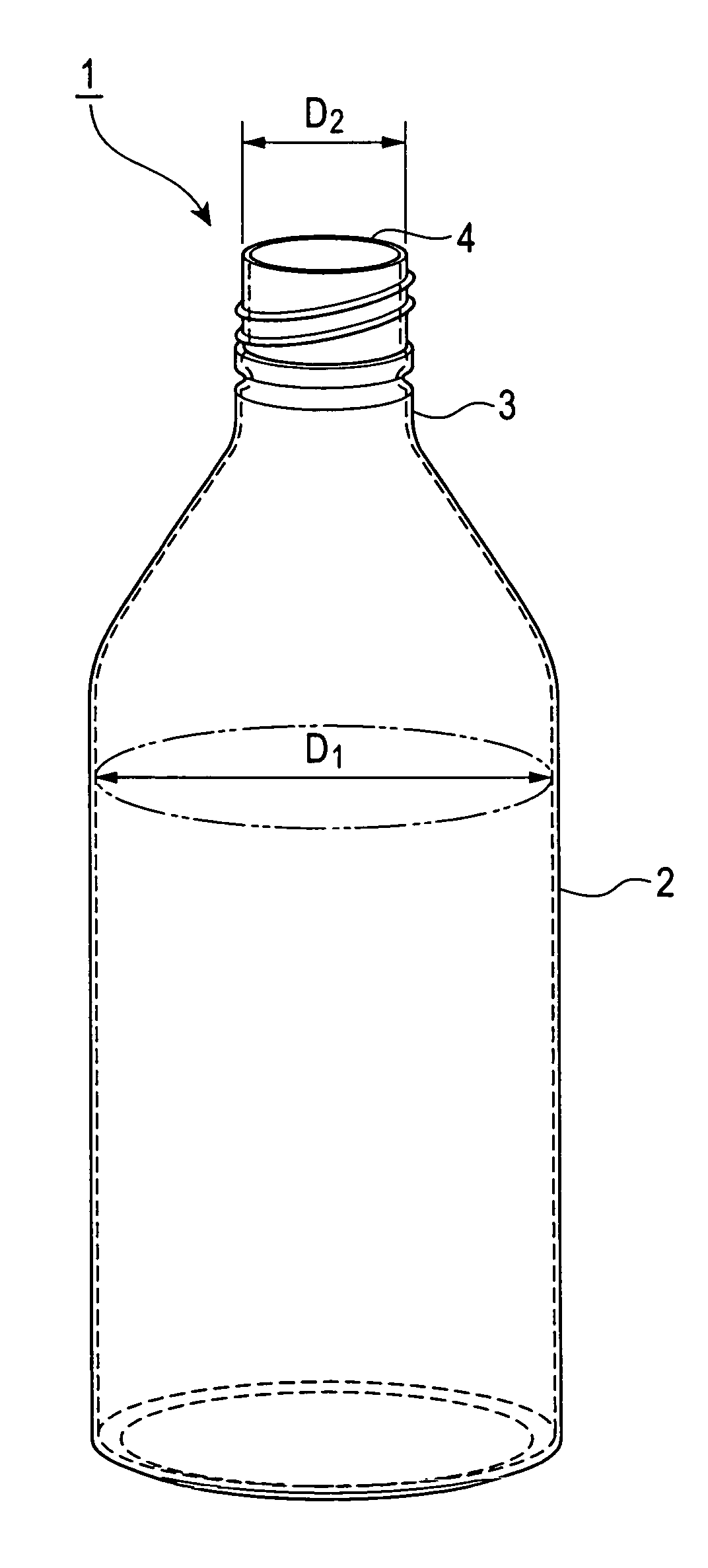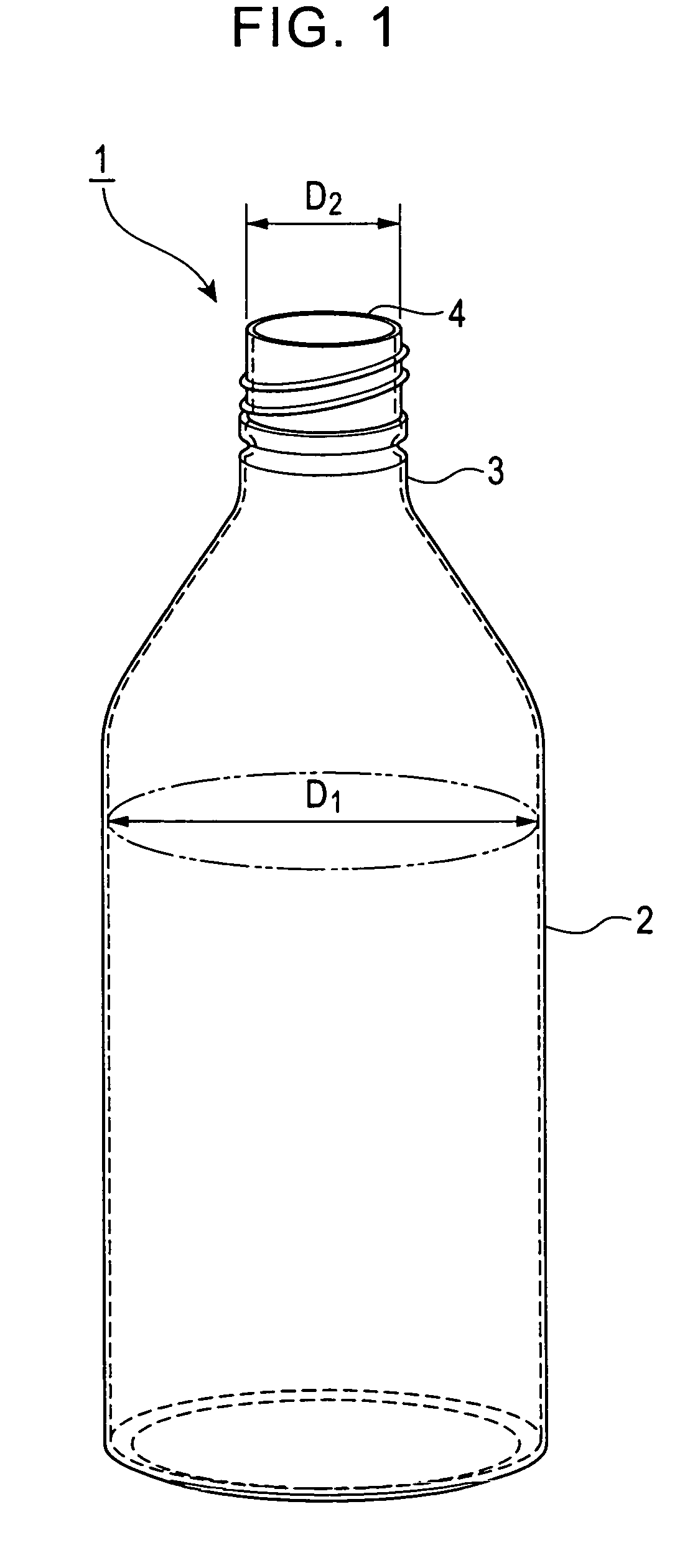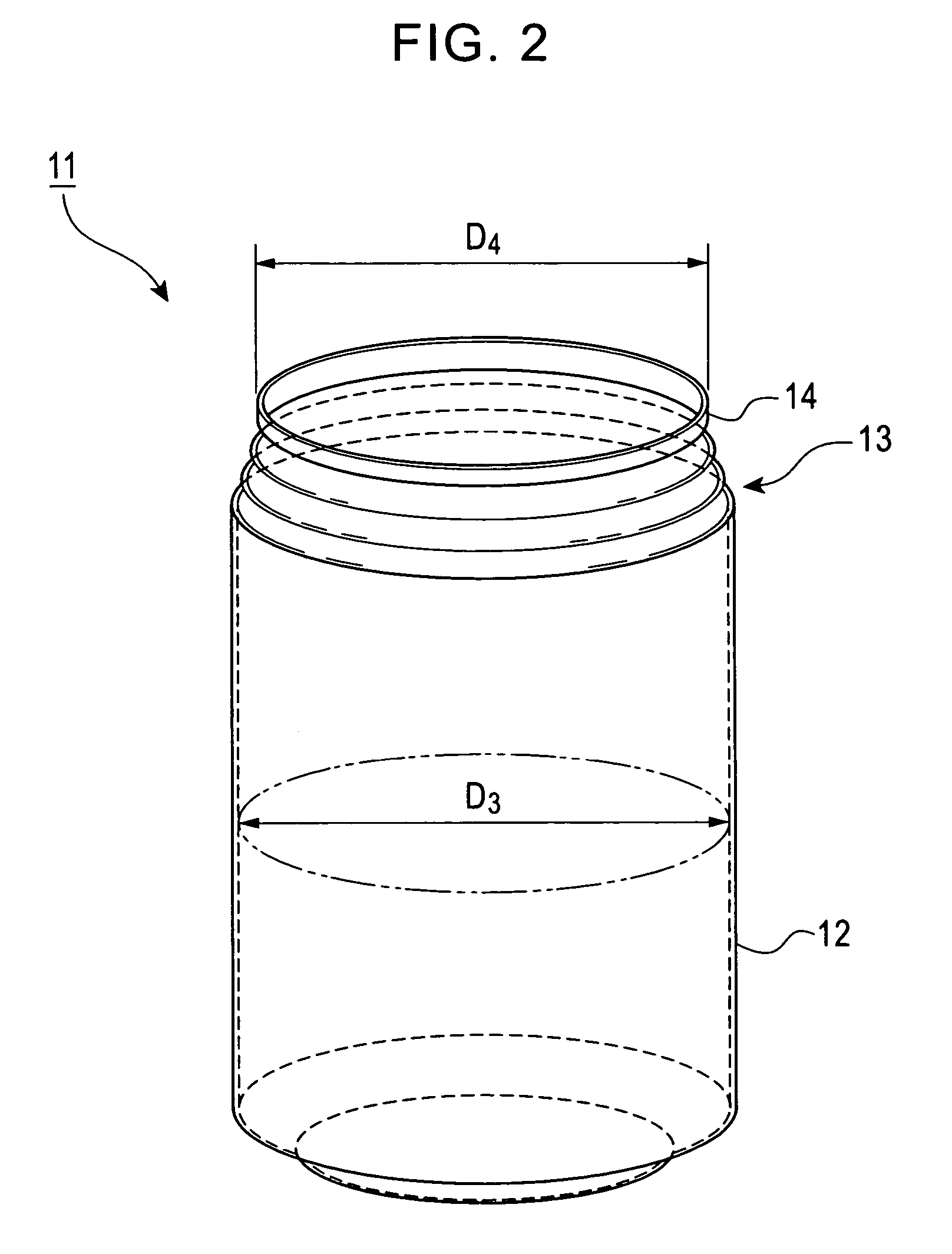Aluminum alloy sheet, method for producing the same, and aluminum alloy container
a technology of aluminum alloy sheet and aluminum alloy container, which is applied in the direction of metal layered products, layered products, chemistry apparatus and processes, etc., can solve the problems of poor appearance, affecting the occurrence of longitudinal streaks, and roughness and dust at the contact portions of aluminum alloy sheet and die, and achieves excellent erv properties and a higher degree of diameter reduction
- Summary
- Abstract
- Description
- Claims
- Application Information
AI Technical Summary
Benefits of technology
Problems solved by technology
Method used
Image
Examples
examples
First Set of Examples
[0085]A first set of examples of the aluminum alloy sheet according to the present invention will now be specifically described in contrast with comparative examples that do not meet the requirements for the present invention.
[0086]An ingot of Al—Mn-based 3004 alloy (JIS 4000) was subjected to the steps of normal casting, homogenization, hot rolling, and cold rolling to prepare test pieces of varying types of aluminum alloy sheets with a thickness of 0.32 mm. The formability of these test pieces was evaluated.
[0087]Table 1 shows the evaluation results of the composition, the number density of Al—Mn—Fe—Si-based intermetallic compound with a maximum length of 8 to 15 μm per unit area, the arithmetic average roughness Ra, the average oxide film thickness, the ironability, the ERV properties, and the leakage rate for the test pieces of each type of aluminum alloy sheet.
[0088]In the first set of examples, in Table 1, the aluminum alloy sheets of Examples 1 to 6 conta...
PUM
| Property | Measurement | Unit |
|---|---|---|
| length | aaaaa | aaaaa |
| thickness | aaaaa | aaaaa |
| arithmetic average roughness | aaaaa | aaaaa |
Abstract
Description
Claims
Application Information
 Login to View More
Login to View More - R&D
- Intellectual Property
- Life Sciences
- Materials
- Tech Scout
- Unparalleled Data Quality
- Higher Quality Content
- 60% Fewer Hallucinations
Browse by: Latest US Patents, China's latest patents, Technical Efficacy Thesaurus, Application Domain, Technology Topic, Popular Technical Reports.
© 2025 PatSnap. All rights reserved.Legal|Privacy policy|Modern Slavery Act Transparency Statement|Sitemap|About US| Contact US: help@patsnap.com



